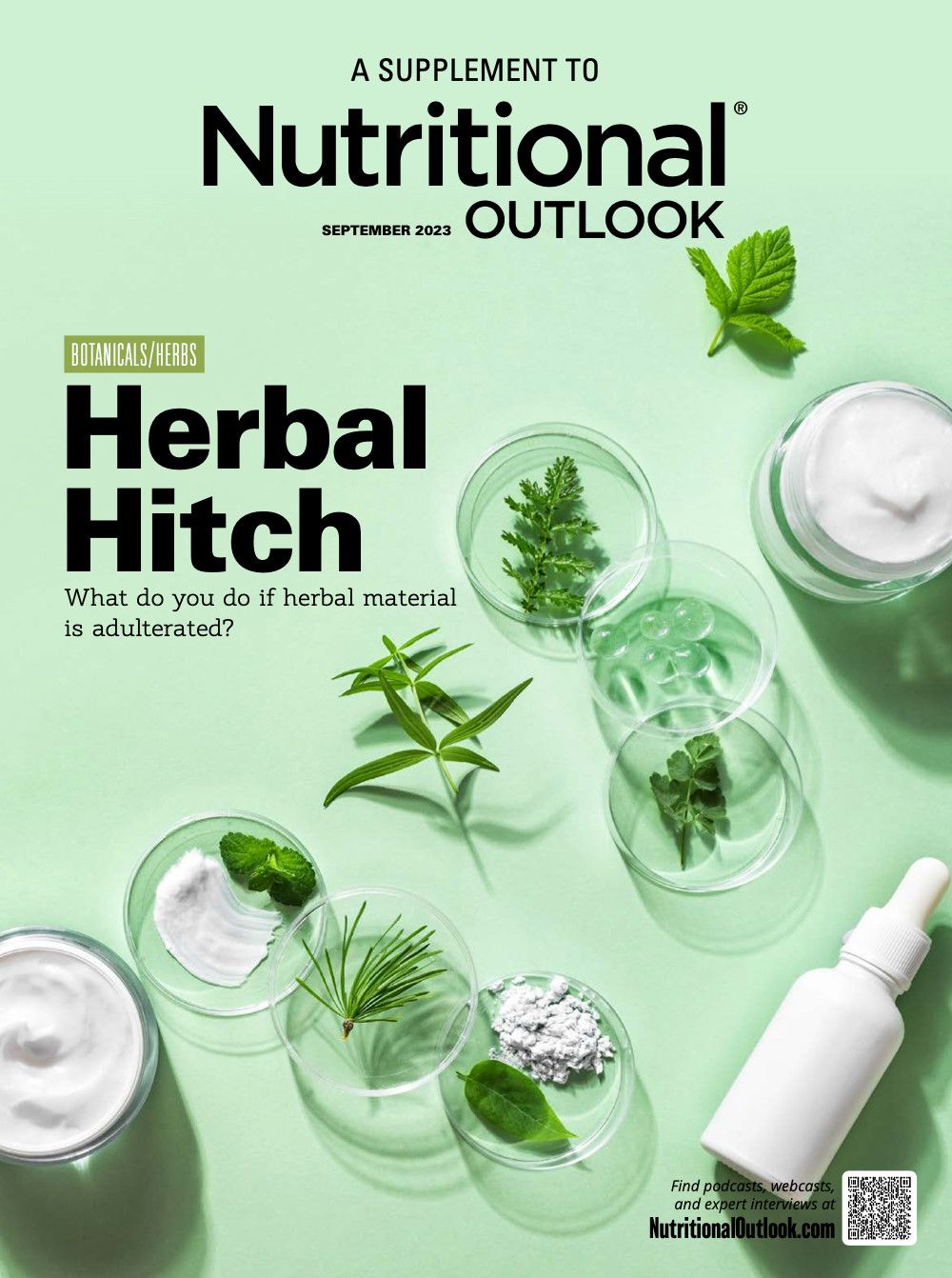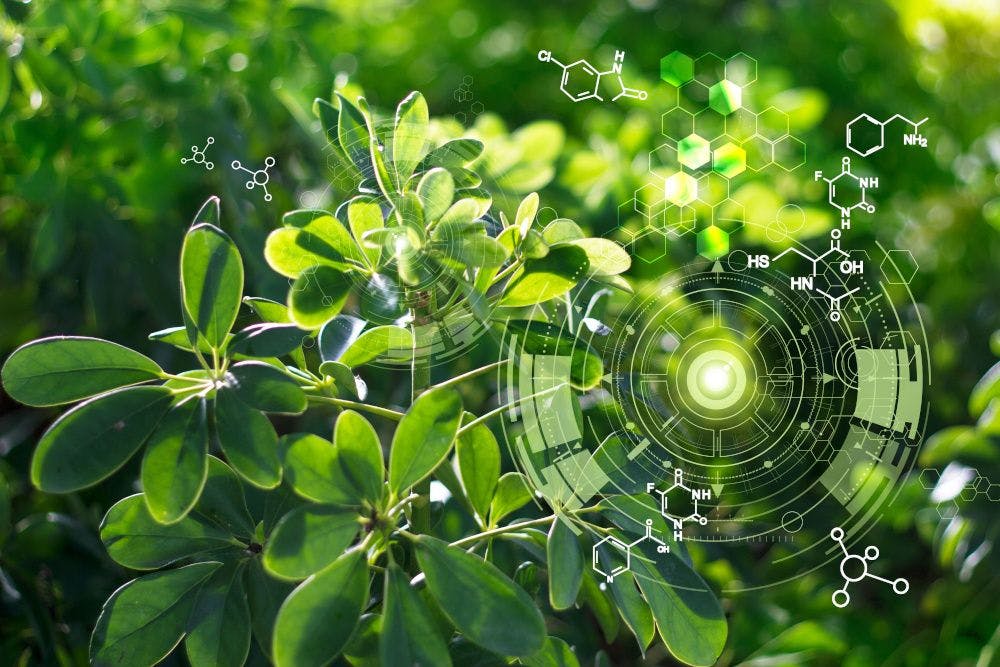What should botanical companies do with adulterated herbal material?
The story behind the Botanical Adulterants Prevention Program’s SOPs for IDAs.
© Surasak / Stock.adobe.com

A sad but inescapable fact of commerce is that wherever the potential for profit exists, so, too, does the potential for fraud. And in the botanical space, that fraud frequently manifests as ingredient adulteration.
This is hardly lost on Mark Blumenthal, founder and executive director of the American Botanical Council (ABC; Austin, TX). Blumenthal is also director of the Botanical Adulterants Prevention Program (BAPP)—a consortium of ABC, the American Herbal Pharmacopoeia (AHP), and the University of Mississippi’s National Center for Natural Products Research (NCNPR). And he is also the editor-in-chief of ABC’s peer-reviewed journal, HerbalGram.
Given adulteration’s ever-present reality, Blumenthal got the notion about six years back to publish an article exploring the question of what happens to botanical material that a buyer rejects because it’s so defective that it can’t be fixed.
And the catch was that Blumenthal already knew the answer: “The buyer,” as he says, “sends it back to the supplier for credit or a reshipment of something acceptable.”
And that’s where the story really begins. “Because then,” Blumenthal continues, “the question becomes, ‘What does the supplier do with the rejected material?’ And it’s unfortunately a dirty little secret in our community that the answer is almost obvious: The supplier has been known to reship the material to someone else.”
It was this state of affairs that responsible industry members like Blumenthal couldn’t abide; but it was also this state of affairs that regulations at the time offered no path toward correcting. So ABC, BAPP, and a critical mass of industry stakeholders forged a path of their own. That path is BAPP’s Best Practices Standardized Operating Procedure (SOP) for the Disposal/Destruction of Irreparably Defective Articles, and this is its story.
The Bottom Line
Adulteration didn’t start with the botanical business, and it’s by no means restricted to it. “The fact is,” Blumenthal concedes, “that people have always cheated.” And the reason is obvious: The bottom line is the bottom line.
Historical sources document instances of adulteration dating back millennia, and ABC even published its own 2011 disquisition on the subject in HerbalGram, in which author and botanist Steven Foster gave readers a historical tour of adulteration in action from the first century AD through the modern day.1
Yet while adulteration is an economic boon to the adulterator, it both cheats the unwitting purchaser and, even worse, could jeopardize the health and safety of the consumer. All of which helps explain why ABC established BAPP in the first place: to educate industry about spotting botanical adulteration, avoiding it, and responding when it happens.
Worst Intentions
In carrying out that mission, BAPP has produced 75 documents confirming—based on lab reports, scientific literature, and other evidence—the presence in the market of adulterated products masquerading as either the raw matter, extracts, or essential oils of 27 common herbal ingredients.
And in practice, notes David Trosin, senior manager, global certification, NSF International (NSF; Ann Arbor, MI), that adulteration “could mean that the raw material is combined with a less-expensive material to increase margins, or it could mean that a fraudulent material completely replaces the intended material.”
Adulteration can also involve dilution of an ingredient, or removal of what Blumenthal calls its “primarily important components.” And though some such cases are purely accidental—inadvertently mixed or mislabeled product, for example—the “big problem,” in Blumenthal’s view, “is that we’re finding more examples that can only be adulteration by intention, which is the definition of fraud.”
The Easy Cases
Fortunately, an adulterated botanical in some cases can be brought back from the brink.
Consider an herbal powder the mesh size of which is too large for the buyer’s encapsulating equipment. While that powder might be out of specification per the agreement the buyer and seller made at the outset, if everything else about it passes QC analysis—identity, purity, strength, et al.—the buyer might simply send it back to the supplier for a reshipment or could even send it to a third party for re-granulation to the proper mesh size.
This is what Blumenthal calls “lawful reconditioning or remediation” of an out-of-spec material. In other words, “There’s nothing wrong with it, there’s no identity or contamination problem, and the item is reparably defective.”
Un-breaking the Egg
“But let’s say,” Blumenthal continues, “that the supplier sends you a St. John’s wort extract that testing shows contains FD&C Red Dye No. 2”—a form of adulteration that BAPP has seen in the field, as the addition of Red No. 2 increases the apparent concentration of red hypericin pigments as measured via spectrophotometry and, thereby, indicates a higher-quality ingredient.
“So if some unscrupulous supplier has used food dyes—some of which have been banned—to create this red illusion,” Blumenthal says, “and if you don’t test your material properly, you’re going to miss it.”
Worst of all, you can’t un-break that egg. Unlike sending a powder back for re-granulation, “There’s no way to take Red Dye No. 2 out of St. John’s wort extract,” Blumenthal says. “Therefore there’s no way to lawfully remediate the product. It’s now irreparably defective, and sending back to the supplier who sent it to you—and who should never have shipped it in the first place—is a bad idea.”
Introducing the IDA
Again, that’s because a seller with no compunction about adulterating a product probably won’t think twice about returning it to commerce, either. As Blumenthal says, “We’ve had people tell us that they’ve received barrels of material that still had rejection stickers on them from the previous customer.”
Which brings us back to the question that launched Blumenthal on this path in the first place—namely, how do we keep suppliers from reselling “irreparably defective articles,” or IDAs?
That’s a term that the BAPP SOP effectively coined, defining it as an article that’s been adulterated or contaminated to an extent that it can’t be effectively or lawfully remediated for oral or topical consumption. And regulations across jurisdictions remain largely mum about what to do if you wind up taking delivery on one. As Blumenthal puts it, “What’s the next step? That next step is a big question mark in most current good manufacturing practices (cGMPs).”
Long Time Coming
So in preparing his article, Blumenthal reached out for regulatory guidance to Michael D. Levin, founder, Health Business Strategies LLC (Clackamas, OR), whom Blumenthal describes as “a known and respected regulatory consultant in this field.”
But upon reviewing the article manuscript, Levin, instead of suggesting revisions, determined that “what we need here is not another article,” as Blumenthal recalls; “we need an SOP.” And that’s just what they built—in the form of the BAPP SOP for IDAs.
Group Effort
Levin himself calls the SOP2, which debuted at SupplySide West in November 2022, the culmination of “four years of work by regulatory and technical experts informed by two very transparent independent rounds of public comment and refined by a core team of subject-matter experts from industry, academia, regulatory, and standards bodies who all contributed their talent and time to the final work product.”
Trosin notes that more than 200 supporters, “including trade associations, nonprofit and professional associations, colleges and universities, third-party analytical laboratories, financial underwriters, media, law firms, regulatory consultants, contract-research organizations, and research institutes,” helped shepherd the SOP through creation and publication.
“The U.S. Food and Drug Administration, the National Institutes of Health, dietary-supplement companies, dietary-ingredient supply companies, analytical laboratories, and cGMP consultants also played a role,” Trosin continues, “and the BAPP’s ad hoc legal advisory board, the ABC’s advisory board, and regulatory and analytical experts in the United States, Australia, Canada, and the UK reviewed and provided expertise during the SOP’s development.”
Stakeholders were encouraged to comment on multiple drafts of the SOP and supporting documents, with several rounds of revision ultimately producing comprehensive sections on definitions, contract-language templates, dispute-resolution processes, FAQs, “and the addition of a third-party nondisclosure agreement (NDA) for use by the buyer, seller, and analytical lab to facilitate dispute resolutions,” Trosin says.
By the Book
That’s quite a package, and when it comes to what it actually counsels parties to do, Levin summarizes it by laying out four “essential BAPP SOP best-practices standards.”
The first calls on the buyer to specify and the supplier to warrant that every lot delivered “will be lawful for intended use and not be adulterated or misbranded,” Levin says. The buyer must also provide the supplier with specifications as per cGMPs, which the supplier agrees to satisfy.
Then, should the buyer and supplier determine that an article received is “irreparably defective” according to the SOP definition, both parties agree to lawfully destroy the article and thereby prevent its reentry into commerce. And should the parties find themselves in dispute over any of the above, the SOP counsels them to adhere to the dispute-resolution process outlined therein, with reasonable modifications sprinkled in as needed.
Finally, upon resolution of any dispute, both parties agree to “the reciprocal notification, recordkeeping, and certified destruction process described for irreparably defective articles to ensure IDA destruction is fully documented,” Levin says.
Putting it more directly, Blumenthal summarizes it this way: “If the third-party lab finds that the material is, in fact, irreparably defective by the standards we’ve agreed to a priori, then we’ve already agreed that we’re not sending it back to you, we’re not going to pay you, you owe us for the extra testing at the third-party lab, and you also owe us for the certified third party who will pick up the material and destroy it.”
Filling a Gap
“Prior to the SOP,” Trosin notes, “there was no common IDA disposal protocol in place.” And while many manufacturers and suppliers had elements of these practices in their quality documentation, he says, “they didn’t have the ability to remove articles that were irreparably defective from the market, and they hadn’t been empowered to ensure those materials didn’t reenter the global supply chain via less-scrupulous actors.”
By filling this gap, the SOP represents a step change for the botanical industry, but Blumenthal is quick to stress that the SOP translates well beyond the herbal sphere to cover any food, supplement, or even cosmetic ingredient: coenzyme Q10, say, or fish oil, or probiotics. And it can provide guidance in dealing not just with outright adulteration, but with accidental contamination, too.
In this manner, “It has a much wider berth of application and impact than we’d originally intended, or than many in industry consider it for,” Blumenthal says. “It’s about botanical identity, but also general ingredient identity and contamination.”
Setting the Record Straight
The minimal pushback he’s witnessed since the SOP’s launch has mainly involved misinterpretations of the procedural document—namely, that it’s an enforceable requirement and not a voluntary set of practices.
But as Blumenthal emphasizes, “We’re not a standards-setting organization, and we’re not looking for ways to create more regulation. In this particular case of adulteration where we know IDAs are out there, we just wanted to provide some leadership and guidance to responsible elements of the community.”
Another clarification he’s keen to communicate is that the SOP “is not about burning or destroying anything that’s merely out of spec,” he says. “It only involves those articles that are out of spec to the point that they’re not lawfully reparable. And it’s our position that those who have such material in their possession have an ethical responsibility to remove it from the supply chain so it doesn’t end up in a food product, dietary supplement, or cosmetic.”
QC Extension
It’s another example of how the BAPP has effectively become “an extension of companies’ quality-control programs,” Blumenthal notes. “We’re not just helping to protect them against fraud by providing information; we’re doing some of the work they’d have to do themselves but don’t have the bandwidth to do. We’re marshalling a lot of resources to this area.”
Levin agrees. “Companies have used our freely available BAPP information to update their specifications, and now they’re using the BAPP best practices better to detect adulterated ingredients, reduce the frequency of receiving out-of-specification materials, and change suppliers only when warranted.”
Even manufacturers and suppliers with strong relationships and fully qualified operating agreements appreciate how the SOP puts everyone on the same page of the fair-play book. As Trosin says, “Most of these companies already consistently use best practices and are grateful for an industry-wide SOP that formalizes what full compliance around IDAs looks like.”
Evolving with Industry
Would stakeholders like to see these procedures become law? Blumenthal believes that, ideally, they shouldn’t have to. “This is an industry and a community problem, and it should be handled by responsible elements of the industry and the community. We didn’t wait for FDA to do this. Industry should lead, and in many cases industry does.”
But evolution is inevitable—and necessary. The botanical and supplement spaces at large are “very layered and fractionated,” Blumenthal concedes. “There are a lot of moving parts. That’s why there’s a ‘c’ in cGMPs—it means current good manufacturing practices. So as things evolve in the industry and in analytical science, industry practice has to move with it. The GMPs and SOPs of 20 years ago may not be fit for purpose in the reality of today.”
Thus, says Trosin, “We imagine it will continue to evolve and expand as science advances. The BAPP will consider revisions and expansions on a periodic basis and will incorporate those changes in much the same way the SOP was developed: via research, firsthand industry insights, expert guidance, and an open process that allows for stakeholder review and commentary.”
Levin even expects to see the SOP integrated into cGMP standards globally, noting that they were introduced in Europe in April 2023, and that the British Herbal Medical Association “has endorsed them and plans to integrate them into their quality standards.”
As Blumenthal puts it, the SOP “has international legs. We’re talking to trade associations and companies in other countries because this problem is universal—the fact that there’s a gap in most dietary-supplement and natural- or therapeutic-products legislation to address this problem.”
Measuring Success
As for how its forefathers will measure the SOP’s success, Trosin predicts that such measures will unspool over the course of “years, not quarters.” Ultimately, he says, success will entail declines in both recalls and the volume of adulterated ingredients in the global market, and the BAPP will track these numbers and “check in with one another frequently to share qualitative updates.”
For his part, Levin points out that because the SOP “requires an educational process that will take years to realize its full potential,” patience is in order. But because the document’s central concept “is a commonsense solution that benefits everyone,” he also predicts “global adoption is inevitable.”
“Perhaps most importantly,” Levin concludes, “the BAPP best-practices SOP builds stronger partnerships; they stimulate better communication between buyer and supplier about expectations, particularly as they relate to the comparatively rare occurrence of IDAs. And if that means that IDAs that otherwise would have been returned for resale are destroyed, in my view, that is success—one IDA lot at a time.”
References
- Foster, S. A brief history of adulteration of herbs, spices, and botanical drugs. HerbalGram. 2011, 92, 42-57. https://www.herbalgram.org/resources/herbalgram/issues/92/table-of-contents/feat-hxadulteration/
- BAPP Best Practices SOP for Disposal/Destruction of Irreparably Defective Articles. American Botanical Council. October 2022. https://www.herbalgram.org/resources/botanical-adulterants-prevention-program/laboratory-guidance-documents/bapp-sop/
Prinova acquires Aplinova to further increase its footprint in Latin America
April 7th 2025Prinova has recently announced the acquisition of Brazilian ingredients distributor Aplinova, which is a provider of specialty ingredients for a range of market segments that include food, beverage, supplements, and personal care.
















